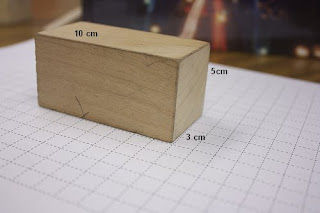

Formula on find surface area of a Rectangular Prism:
A= L x W
Top
A= L x W
A= 8cm x 16cm
A= 128cm2 A=
Front
A= L x W
A= 2cm x 16cm
A= 32cm2
Side
A= L x W
A= 2cm x 8cm
A= 16cm2
TSA(total surface area)= 128 + 128 + 32 + 32 + 16 + 16
TSA= 352cm2
Triangular Prism:


Formulas on finding the surface area of a Triangular Prism:
-A= L x W
-A= B x H / 2
A= L x W
A= 2.5cm x 10.6cm
A= 26.5cm2
A= L x W
A= 2.5cm x 8cm
A= 20cm2
A= L x W
A= 2.5cm x 7cm
A= 17.5cm2
A= B x H / 2
A= 7cm x 8cm / 2
A= 56cm / 2
A=28cm2
TSA= 26.5 + 20 + 17.5 + 28 + 28
TSA= 120cm2
Cylinder:


Formulas on finding the surface area of a cylinder:
-(pi)d= C
-r=d/2
-r2=d
-A= (pi) x r x r
-A= L x W
(pi)d= C
3.14 x 5cm
15.7cm
r=d/2
r=5/2
r= 2.5cm
Area of a circle
A=(pi) x r x r
A= 3.14 x 2.5cm x 2.5m
A=19.625cm2
Area of a Square
A= L x W
A= 7cm x 15.7cm
A= 109.9cm2
TSA = Area of a square + Area of a circle + Area of a Circle
TSA= 109.9 + 19.625 + 19.625
TSA= 149.15cm2
COMMENT! :D












































